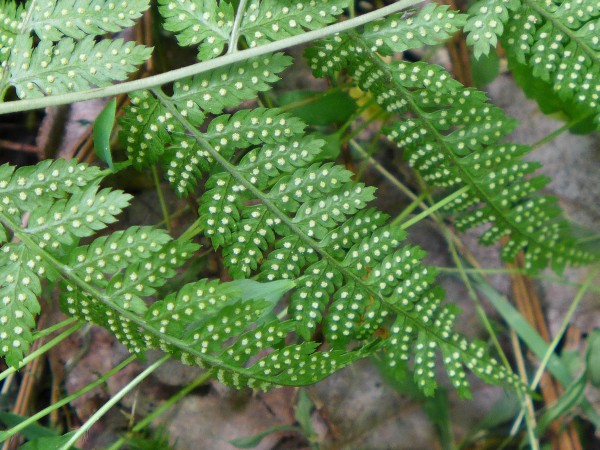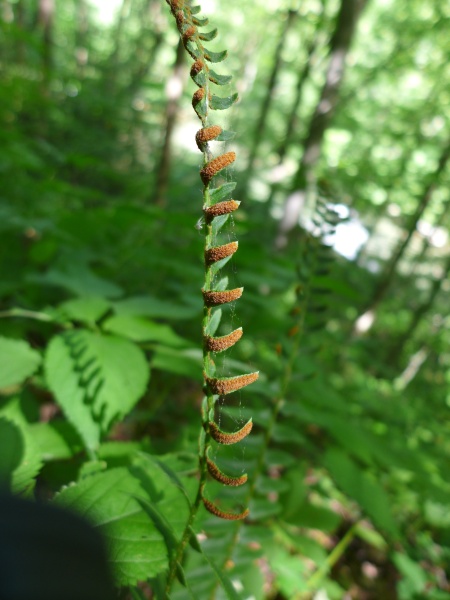
Ferns look simple. They don’t have flowers so they must be boring, right? Not!
Look under the leaves(*) in June and you’ll see spots, called sporangia, that are creating spores for the next generation. Here’s another example.

The spores are single haploid cells with only one set of chromosomes, just like the sperm and eggs of mammals. But the spores don’t “mate” with anything. Instead the next generation grows directly from the spore. It’s a small heart-shaped green thing called a prothallus and it’s also haploid. The prothallus eventually produces sperm and eggs that unite in water to become the next generation, the leafy fronds.
The frond phase is diploid with two sets of chromosomes. In time, the plant produces sporangia and the process repeats.
Because of this fern “parents” and “kids” look nothing like each other: prothallia, leaves, prothallia, leaves … on and on and on.
Confused? Here’s a video that explains it better than I can.
(*) Some ferns, such as sensitive fern, produce spores on parts of the plant that have no leaves. Others, such as hay-scented fern, don’t display their sporangia as openly as those pictured above. Read more about ferns here.
(photos by Kate St. John, video posted by Gabe Fierro on YouTube)